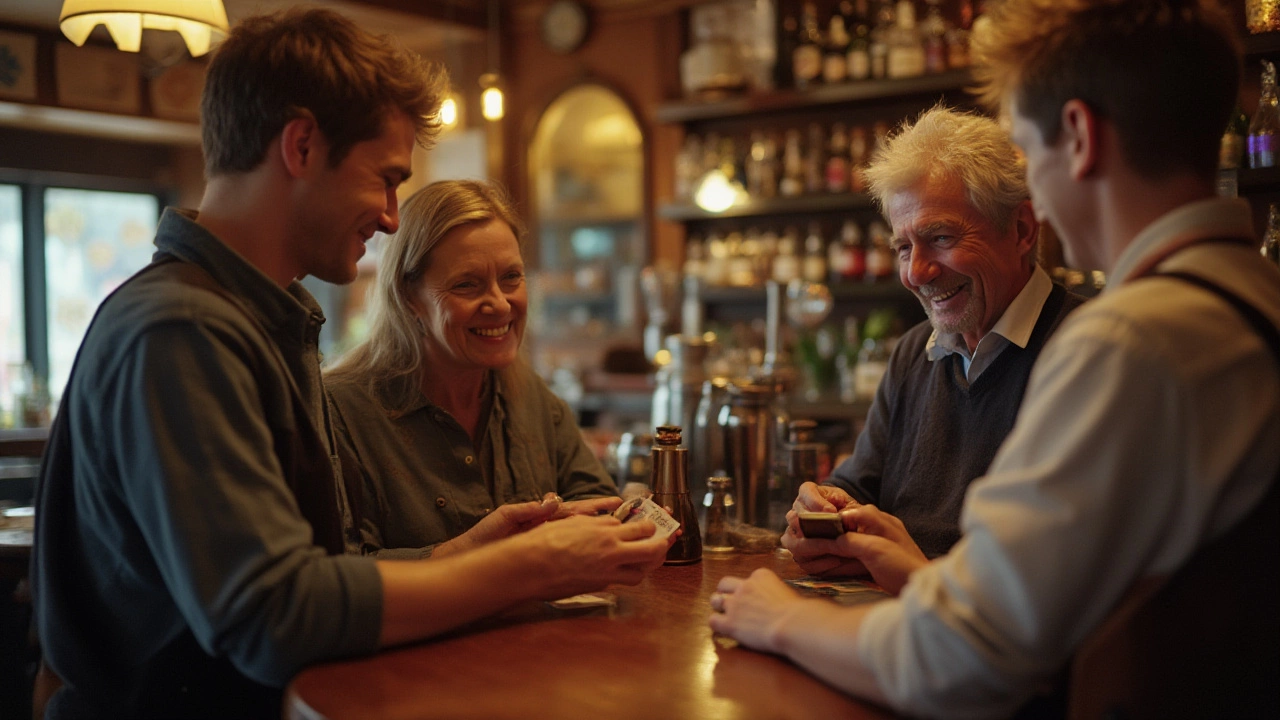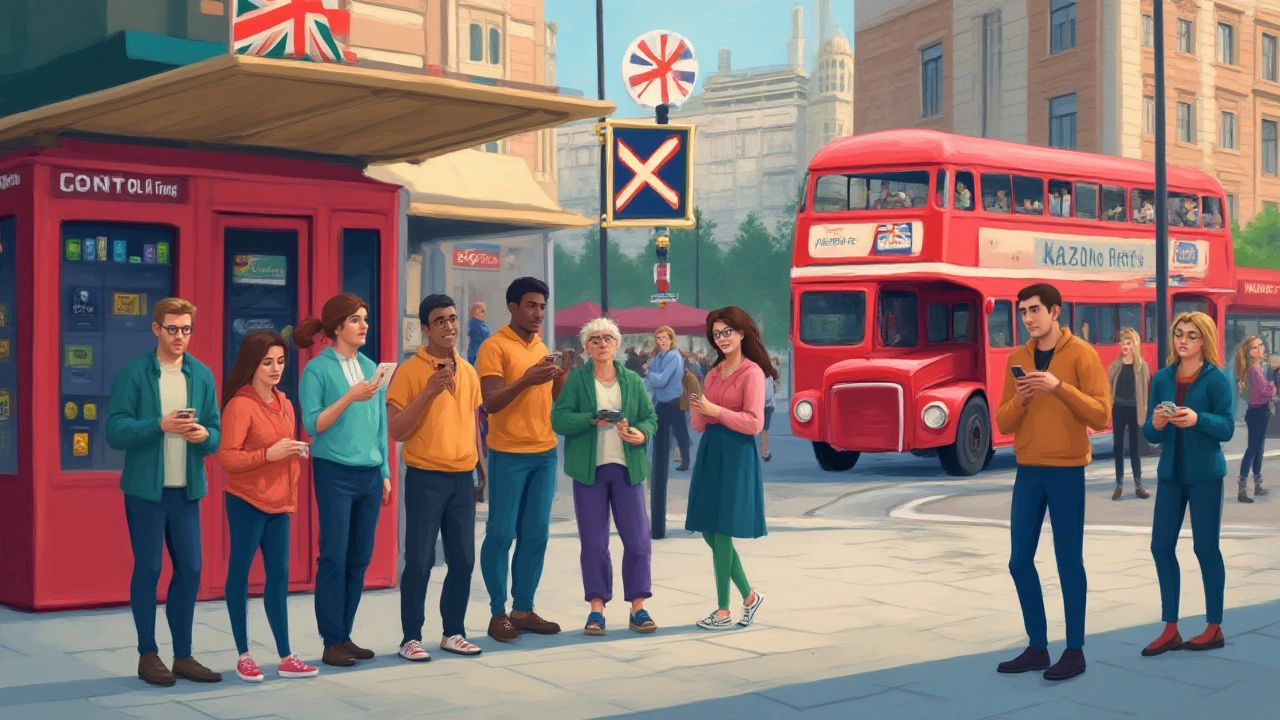Picture this: you land at Heathrow, hungry and fresh off a red-eye from Toronto, with only a debit card that claims to be ‘globally accepted.’ The coffee shop cashier gives you a look, and suddenly all those stories about England being cashless or cash-heavy come flooding in. So, do you actually need cash in England, or can you get by just tapping like you do at home?
The Cash Landscape in England: What’s Really Happening?
Life in England used to run on pound notes and jingling coins — think pub landlords counting change, buses with those delightful paper tickets, and little market stalls where cards were just plain weird. But fast forward to 2025, and the country’s payment scene feels like a curious mix. Yes, England leads Europe for contactless adoption. Even the Queen’s grocer in London’s fancy Borough Market now waves a card machine. According to UK Finance, over 90% of face-to-face payments in England are now done by contactless card or mobile wallet. A 2024 Bank of England report showed that over 63% of all transactions were made by contactless alone. London’s Tube and buses? Card or mobile payments only, no cash fares accepted for years. Yet, there’s still this stubborn undertone: cash isn’t dead. Instead, you’re in a place where both options live side-by-side, depending on where you wander.
Not every corner shop, food truck or countryside bed-and-breakfast is playing the card game. Especially outside the urban hubs — in sleepy Cotswolds villages, tiny Cornish bakeries, or vintage flea markets dotting the northern towns — cash is still king. Want to tip the Uber driver or busker playing ‘Wonderwall’ in Covent Garden? Best have a £2 coin ready. Drop by a tearoom in rural Yorkshire, and you might still see “Cash Only” stuck on the window, especially if you want to avoid a card processing fee or if the Wi-Fi blips. And don’t forget, a handful of charity shops or pub quizzes may look puzzled if you hand over anything digital. There’s also the trust factor: some locals, especially older folks or anyone wary of privacy, love their cash.
How about withdrawing money? ATMs remain everywhere — known as ‘cashpoints’ here — even in most small towns and airports. You’ll find major British banks like Barclays, Lloyds, HSBC, and NatWest scattered densely around cities, but they’re thinning out in the countryside. Still, most big supermarkets (Tesco, Sainsbury’s), post offices, and even petrol stations have cash machines. Beware some convenience stores or private ATMs, as they can charge withdrawal fees (usually around £1.50 - £2.00 per transaction). Check for “Free cash withdrawals” on the machine label — it's easy to spot.

When Do You NEED Cash in England?
Let’s get specific: where does cash actually matter? First, traditional English pubs — especially outside London, in rural places, or old-school taverns — sometimes have card minimums (£5 or £10 is common), or even just take cash for a round. Sometimes their payment terminal fizzles out, and the bartender just shrugs and says, “Cash only tonight, love.” Markets and festivals are also a cash zone, despite the Square reader trend. Sunday food markets, outdoor antique fairs, and pop-up stalls in Brighton Pier or Camden often have at least a few vendors for whom cash is less hassle.
Want a piece of advice? Never assume. Some of the most surprising spots — like trendy London street food stands — still want old-fashioned coins, especially if they're only serving small bites. It’s also smart to have cash for public toilets (yes, many charge 20-50p, sometimes coin-only), luggage lockers, charity shop finds, or tipping hotel porters if they’re especially charming. The British Museum? Completely cashless now. But the ice cream van parked outside? Might not take cards on a busy day.
Outside the south and southeast, there's an even bigger cash window. In Yorkshire and the Lake District, you might stumble on ‘honesty boxes’ along walking trails — unmanned stalls where you leave a pound or two for fresh eggs, home baking, or even a jar of wildflower honey. No cards, no app, just honesty and coins. Taxis can also be hit or miss. Sure, Uber and most black cabs in big cities will take cards or Apple Pay, but in smaller towns, the minibus guy outside the rail station just wants a fiver. Likewise, not every local bus in rural England takes digital payment, so always check or bring small change for the fare.
Some emergencies are just easier with cash. Lost wallet and no cards? British banks won’t hand out money to a traveler, but you can use Western Union or MoneyGram in a pinch, which often pay out in cash. If there’s a problem with your card — chip errors do happen — you’ll be glad you stashed a £20 note in your bag for late-night snacks or train tickets. And don’t forget UK power outages aren’t mythical, especially in the winter countryside. When the Wi-Fi’s down and the card reader’s blinking, the shopkeeper will love you for a crisp tenner.

Smart Money Tips for Travelers in England
Ready for actual pay-in-the-wild tips? First, don’t rush to exchange wads of cash before you land. Canadian airports and local banks offer terrible rates, and you’ll lose a chunk in hidden fees. Use your debit or credit card to withdraw small amounts from an ATM after arrival for the best exchange rate — just check your bank’s international withdrawal fee policy. Beware, some Canadian banks automatically block suspected ‘foreign’ transactions; tell your card provider you’re traveling in advance to avoid headaches at checkout. And go contactless: England’s transit, big stores, and most restaurants are obsessed with tap-and-go — Visa and Mastercard are golden, while Amex is less accepted outside London.
Keep a mix of payment methods. Your main credit card, a backup debit card, and about £30-£50 stashed in cash is a perfect cocktail. Store cash in more than one place — a purse, deep pocket, and a zipped suitcase compartment (just in case). Use Apple Pay, Google Pay, or Samsung Pay for quick and safe transactions, but remember, not every shopkeeper is sold on mobile payment just yet. If you’re spending time in London, look into a contactless Oyster card for tubes and buses, but remember that any contactless bank card (Canadian or UK) works on public transport too, thanks to the system’s clever upgrades in the last few years.
Want to tip? Cash makes it easy for small tips at pubs, taxis, or those elusive street performers. But in cafes, restaurants, and hotels, it’s fine to add a tip to your card, especially in the cities. The standard is usually 10-12.5% for service, but rounding up is appreciated. Be kind: not every server gets credit card tips fast, so if you want to make their night, slip them a few pounds in cash.
Watch out for ATM scams — avoid machines stuck in dim alleys or corners of tiny convenience stores. Stick to bank-branded ATMs and cover your PIN (as the locals do) for peace of mind. If you must exchange cash, post offices consistently offer better rates than currency exchange booths in tourist areas, which love to pile on commissions. Request smaller notes — many cabs and corner shops won’t want to break a £50 note, and some will outright refuse.
Don’t sweat if you leave England with pounds left over. You can use them in Scotland and Wales, but not outside the UK, and no, Canadian banks won’t swap them back without a painful markup. Consider spending down your cash on snacks, books, or souvenirs at WHSmith or Boots in the airport before you fly home.
So, do you need cash in England? The answer is sometimes — but going cashless won’t get you into real trouble in most cities. Stuff a few coins and notes into your wallet, keep your cards handy and charged, and focus on the real adventure: exploring England’s pubs, castles, markets, rolling hills, and maybe, just maybe, that perfect vintage teacup hiding at a market stall.
